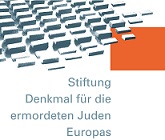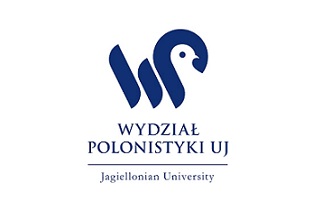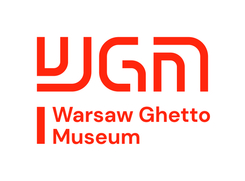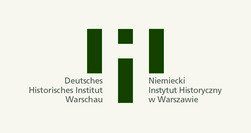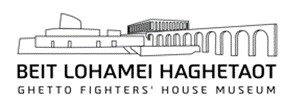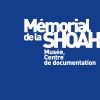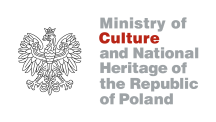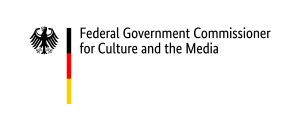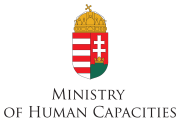The online debate will take place on YouTube on 18 November (Wednesday) at 15:00–18:30 CET.
* Please note that all times are indicated according to Warsaw time, i.e. Central European Time (UTC+1:00).
KEYNOTE
Ewa Domańska (Adam Mickiewicz University, Poznań)
The Environmental History of the Holocaust: Chances and Challenges
with the contribution of Jacek Malczyński (University of Wrocław, Poland), Mikołaj Smykowski (Adam Mickiewicz University, Poznań)
PANEL PRESENTATIONS
Hannah Wilson (Nottingham Trent University)
The Material Memory of the Sobibór Death Camp in Private and Familial Spaces
Johanna Lehr (Foundation for the Memory of the Shoah, Paris)
The Collective Forgetting of the Jews who Died in the Drancy Internment Camp
Katarzyna Maja Grzybowska (Jagiellonian University, Kraków)
Human and Non-Human Transmission of Memory: a Case Study of Local Memory of Krępiecki Forest
Nastassya Ferns (University of California, Davis), Diane L. Wolf (University of California, Davis)
Accessing Trauma on Demand: The Holographic Holocaust Survivor and Digital Bodies of Violence
Chair: Małgorzata Głowacka-Grajper (University of Warsaw)
Commentary: Małgorzata Wosińska
ABSTRACTS
Ewa Domańska
The Environmental History of the Holocaust: Chances and Challenges
This presentation summarizes arguments presented by Jacek Małczyński, Ewa Domańska, Mikołaj Smykowski and Agnieszka Kłos in a programme article “The Environmental History of the Holocaust” that introduces a special issue on “The Environmental History of the Holocaust” (guest editors: Ewa Domańska and Jacek Małczyński) of the “Journal of Genocide Research”, vol. 22, no. 2, 2020. It will focus on chances and challenges of the project while looking for audience comments and criticism that would help to elaborate and improve the project’s main arguments. The Environmental History of the Holocaust considers post-Holocaust spaces and landscapes as specific ecosystems and examines relations between its actors (human and non-human) in order to show the Holocaust’s spatial markers and long-terms effects. It broadens Holocaust studies as a field of research and opens up new questions concerning relations between nature and extermination in order to provide a more holistic perspective for exploring the relationship between culture and nature, genocide and ecocide. The approach proposed here shows Holocaust and post-Holocaust landscapes in terms of ecological/natural heritage, which might influence the way these spaces are commemorated, conserved and preserved, as well as used for tourist purposes. I will present the environmental history of the Holocaust as a subdiscipline and an emerging field of Holocaust studies developed in the context of environmental humanities with its current interest in the Anthropocene, soil science, forensics, multispecies collectives, and relations between ecocides and genocides. I would claim that this perspective should “complement and supplement” (Caroline Sturdy Colls’ expression) existing approaches in Holocaust studies. I will identify EHH’s central research problems and questions, discusssources and methods and advocate a necessity to create new theories and interpretive categories that could refresh theoretical discussions and offer interesting interpretations in this field of Holocaust research.
Hannah Wilson
The Material Memory of Sobibór Death Camp in Private and Familial Spaces
Material culture is arguably one of the most significant disciplines in shaping the future of Holocaust memory and museum studies, for which much scholarship exists. Yet, there is still much research to be done concerning the concept of home, internment and displacement in the memory of Holocaust survivors, and how personal objects or artefacts have influenced this. This presentation aims to address the increasing importance of object biographies within private, familial and localised spheres. The case studies presented here will investigate the ways in which materiality has helped to shape the narrative of the Holocaust experience and after, with a specific focus on the private and familial material memories concerning the victims of Sobibór Death Camp (Poland). Following either the death or relocation of these victims, I seek to emphasise the increasing importance of material culture within the ‘home’, where the transmission of memory and experience is often accessed through the presence of ‘testimonial objects’ (M. Hirsch, 2007) . Through semi-structured qualitative interviews and personal visitation, I analyse the relevance of these items for the following generations, and how this has affected their own individual understanding and perception of Sobibór, as part of their own personal narrative. Although the Sobibór survivors left Poland with few valuables or belongings following their experiences during the Holocaust, certain mementos were recovered or carried with them throughout their post-war movements, taking presence and a ‘resting place’ within their new private and familial spaces. In my research, then, I investigate how these objects have affected different generations within the family, including those who have inherited such artefacts after their parent or grandparent passed. In working with private archives and sources, my research also aims to raise issues of preservation; should an object charged with such loss and meaning be donated to an institution for further conservation and research, or do objects of the dead belong with the family? If so, what meanings do the objects carry within a private setting, and what are the limitations?
Johanna Lehr
The collective forgetting of the Jews who died in the Drancy internment camp
My research deals with the handling of the bodies of Jewish people who died in the Drancy internment camp in France between 1941 and 1944. A total of 132 Jews interned in the Drancy camp died there between 16 September 1941 and 26 July 1944. Where are their corpses? This question, difficult to answer for decades, resulted in the myth of the mass grave – undoubtedly coming through transposition of images from the broader spectrum of Nazi brutality in Eastern Europe. But, while these dead have disappeared from collective memory, I found out that there is abundant evidence in the archives of their handling by the French police, the judicial system, forensic medicine, the consistory, funeral directors and Paris cemeteries. My research shows that between 1941 and 1944 they were buried in Paris cemeteries in accordance with a normalised procedure, either by their families via Parisian funeral directors (Jewish or non-Jewish) or through the action of the Union Générale des Israélites de France. On a methodological level, my research is based on the 132 Jewish victims’ bodies trajectories. I collected all the administrative data related to those victims. This study at an individual scale allows me to shed a new light on the issue of collaboration of France with Germany. I found out that the bodies were handled on French soil in a doubly normalised manner: first by the French police and the judicial system, and then in relation to funeral arrangements consistent with German authorizations. Knowledge derived from the archives work gave me the opportunity to interact with relatives: giving them informations about victims whose memory has progressively vanished and collecting additional data from them. In 2019, I provided the location of the grave of a 4 year-old-girl named Cecile who died as Drancy internee after her parents’ deportation to Auschwitz. Only one cousin remembered her from his childhood but he didn’t know that she was buried in Paris. He gave me the detailed story of her father’s return from Auschwitz in 1945. On that respect, historians can have a deep impact on Holocaust family memory.
Katarzyna Maja Grzybowska
Human and Non-human Transmission of Memory: a Case Study of Local Memory of Krępiecki Forest
The paper examines the human and non-human transmission of memory in the neighbourhood of a place of mass murder that contains unmarked, uncommemorated body disposal pits (mass graves). The main conceptual frame for this task is the theory of collective [Halbwachs, Assmann, Olick] and environmental memory [Domańska, Praczyk, Małczyński, Smykowski]. The study is based on a case of Krępiecki Forest: a place located near the Majdanek concentration camp where the Nazis killed, put into the ground and burnt thousands of victims. Many human remains are still at the place, in the ground. Nowadays it is a not-memorized-enough local forest situated between villages Krępiec and Kazimierzówka that are still inhabited by witnesses of the murder or their descendants. The research is based on both a textual analysis and field research. It is designed on two intertwining levels: 1) ontological, focused on the place itself, its physical dimension (landscape studies, forensics) 2) and epistemological, focused on the site’s relations with its surroundings (memory studies). The proposed conference paper examines unpublished testimonies of the witnesses and interviews with local inhabitants with particular focus on relations between humans and inanimate elements of the natural environment. The research questions are: How the landscape of the genocide (polluted landscape [Pollack], non-site of memeory [Sendyka], traumascape [Tumarkin]) and ways of presenting it by direct witnesses of the massacre shape the perception of the area. How is remembering conditioned by the environment and interactions with non- human actors? This analysis lead to better understanding of how memory can be co-determined not only by human-to-human relations expressed best in narration and communication but also by the environment and interactions with non-human actors.
Nastassya Ferns – Diane L. Wolf
Accessing Trauma on Demand: The Holographic Holocaust Survivor and Digital Bodies of Violence
Within the past decade, new forms of interactive technology have been utilized to educate and raise awareness about the Shoah. Holograms of Holocaust survivors create a new site and form of memory making designed to outlive the last generation of survivors. However, despite their contribution to Holocaust education, such holograms are not without their controversies. Based on our research about the holograms as well as observations of the interactive holographic exhibition Dimensions in Testimony at the Holocaust museum in Skokie, Illinois, the purpose of this paper is two-fold. First, our observations at this exhibition revealed the audiences’ proclivity to focus on certain aspects of the survivors’ lives rather than others, focusing particularly on the trauma experienced in concentration camps. We have termed this phenomena “trauma on demand.” Second, we link these observations with contemporary global focus on videos of U.S. police brutality through this notion of trauma on demand. How does the public view and respond to these different digital depictions of trauma? What are their reactions and what actions are taken once they are viewed? Can we speculate what this means for the future of memorialization and memory? This is a first attempt to link the globalization of memorialized trauma of the Shoah with the human rights abuses uncovered by the Black Lives Matter movement. These questions are discussed in relation to an ever-increasing mediated culture and its impact on global social justice movements.


